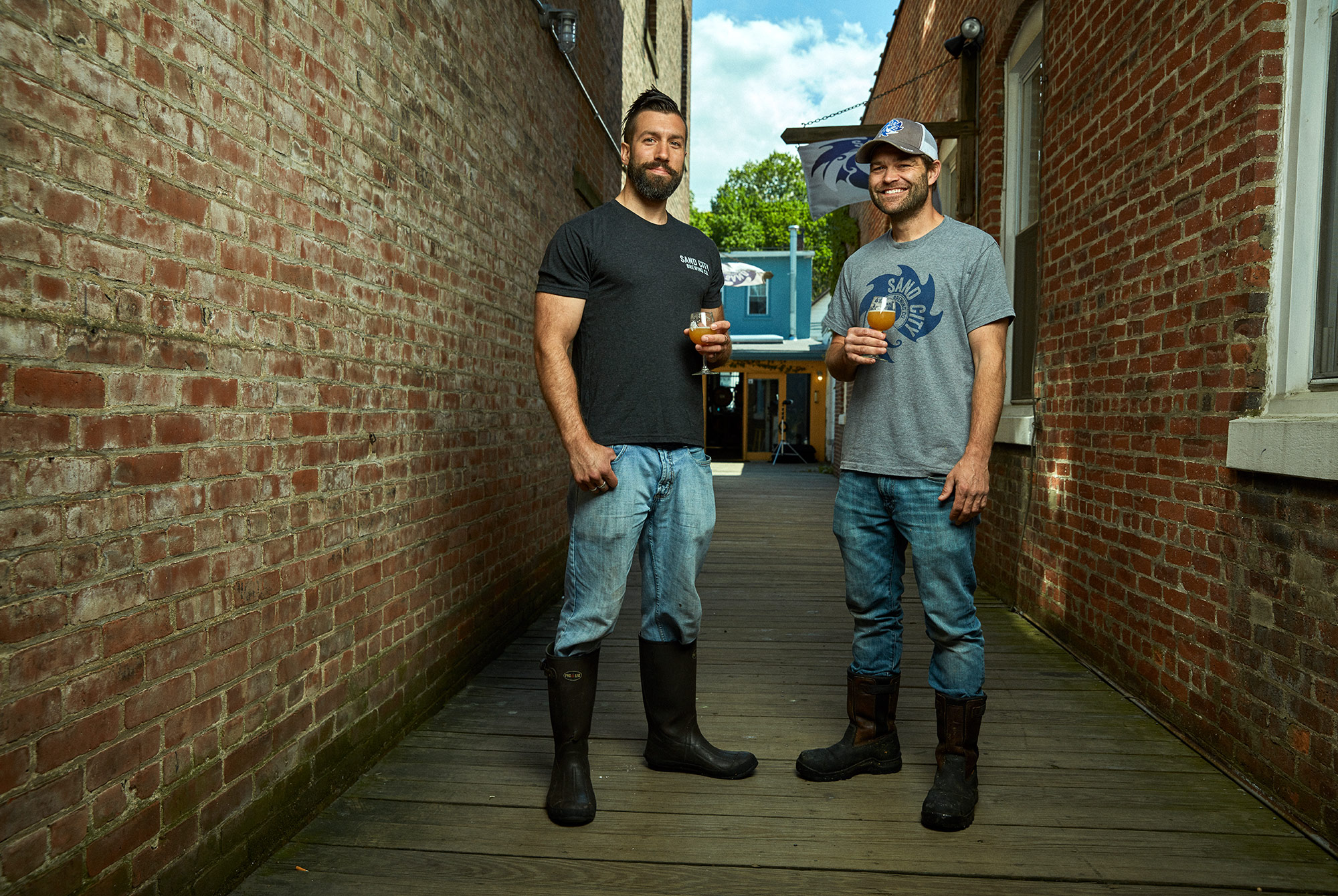Shop
How Sand City Became Too Popular for Its Own Good
The ugly side of line culture.
As recently as four years ago, the phenomenon of lining up outside breweries for drops of limited-edition 16-ounce cans of IPAs, particularly in the New England style, didn’t exist. It was like “Stranger Things,” or the ultimate Stranger Thing, Donald J. Trump as the 45th president of the United States. Not yet part of the mainstream, but soon everyone would be talking about it.
If there is a forefather of what could be described succinctly as IPA OMG FOMO, it would be John Kimmich, the brewmaster and part-owner of The Alchemist in Waterbury, Vermont. In the early part of the decade, the trend of standing in line for cans started with Kimmich’s novel double IPA, Heady Topper, which became The Alchemist’s exclusive focus upon opening a production facility, in a perfectly timed business venture, just days after the original brewpub had been destroyed by Hurricane Irene in 2011.
Already the most popular of The Alchemist’s beers, which had all been available only on draft at the small pub, Heady Topper was now being brewed and canned at the new facility and sold in four-packs of 16-ounce cans from its small retail space and tasting room. The beer that would eventually be ranked number one in the world on Beer Advocate was available to take away for the first time. It was so adored for its elusiveness and its lush flavors of tropical fruit, citrus, and pine, that it grew into a word-of-mouth sensation.
With this type of portability, beer fans continued to come from hundreds of miles into town. But a black market also emerged.
Soon, The Alchemist put daily limits on the number of four-packs each customer could purchase, so that the brewery would have enough to stock the retailers around Waterbury. (Like most brewers of the style, it has always kept availability regional.)
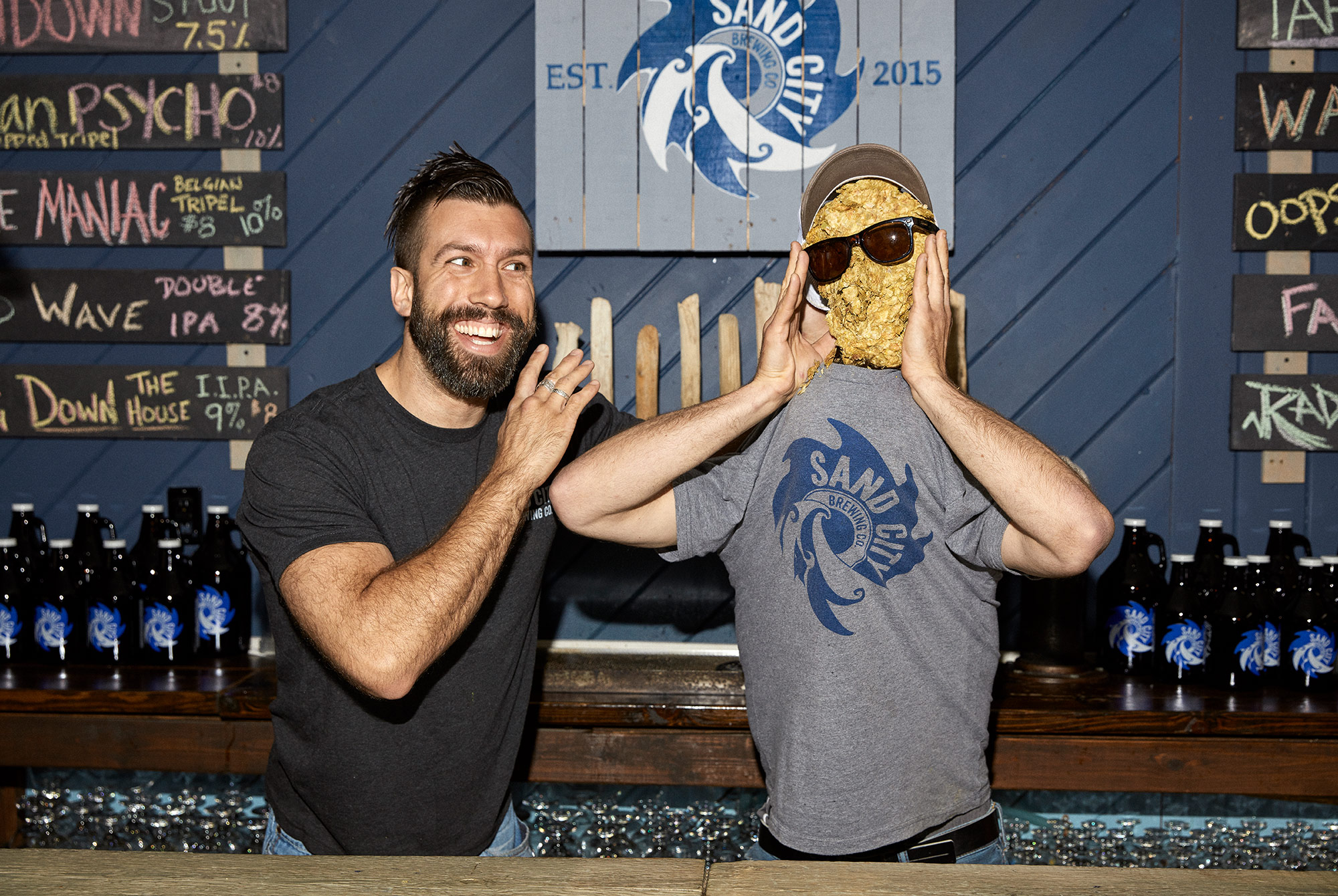
The fervor only intensified when, after complaints from neighbors, and then the state, the Kimmiches were forced to close their retail store. This led to intensified Heady searchers trolling Vermont markets hoping to land a haul (remember Heady Spotter?).
While monumental, the intense fervor surrounding Heady Topper was isolated to just that, Heady Topper.
It wasn’t until 2015, when Brooklyn’s Other Half Brewing held its first can release, followed by Tree House in Monson, Massachusetts 11 days later, that the hypebeast started to snarl more about specific breweries than about specific beers, birthing a business model that involves several new canned IPAs being released at least once a week.
The rotating on-premise can release strategy would mark a paradigm shift in the industry, with producers of hazy IPAs across the country adopting the practice. It has changed the way fans buy, purchase, and obsess over beer, and has given birth to the line phenomenon.
More than ever, people are seeking their beer at the source. On-premise sales have become the preferred distribution method of an increasing number of brewers, one being Sand City Brewing Co. in Northport, New York.
The brewery is a standout producer of New England-style IPA, and this from someone who has covered beer on Long Island for years. Its joose has put more lips on the area’s beer scene than since the ascendancy of Blue Point Brewing during the first wave of craft.
The brewery is no stranger to the “line life”; for nearly every release, anxious beer lovers queue up, oftentimes more than 100 deep, on the sleepy town’s quiet Main Street. This street is where the brewery sells virtually every drop of beer it cans within hours of opening.
With each new can release, fans arrive earlier and earlier to line up. Did the brewery anticipate this level of success? “Absolutely not,” Kevin Sihler, the brewmaster and an owner, says. “It’s been above and beyond expectations. We’re so thankful and so blessed to have such a loyal customer base, to see the same people on our lines week after week. And then the trading market, that’s another subculture that’s been amazing for us. People posting our cans on social media all over the country. We feel blessed.”
Unfortunately, that level of excitement and success has come with an unanticipated hiccup, as Northport’s zoning board recently prohibited Sand City from reopening its popular tasting room, which had been closed since September to rebuild the walkway, after complaints of large crowds, noise, and intoxicated patrons during can releases. In a bit of an ironic twist of fate, Sand City’s issue isn’t all that dissimilar from The Alchemist’s.
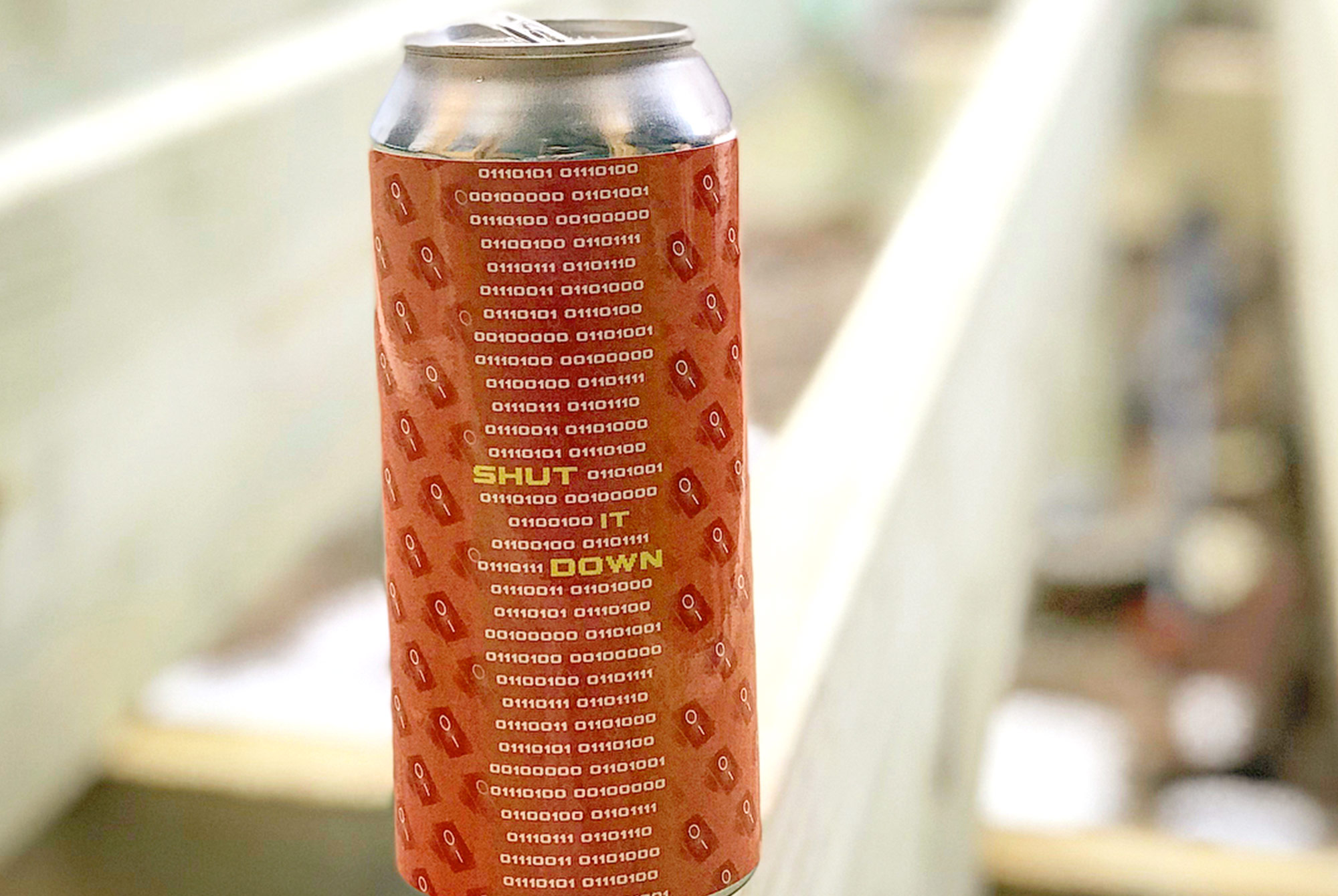
“Sand City’s success has created problems for the village,” Andrew Cangemi, the village’s zoning-board chairman, said at a public hearing in December. “This was never supposed to be a bar. It was never supposed to be more than the allowance to give them small tastes so they can sell there, and it’s turned out to be something significantly more than that.”
Sand City is due to return for another compliance hearing on March 28. Until then, the brewery has shifted can sales to its rear entrance.
The taproom closing has “significantly” affected revenue, Sihler says. “It’s taken away our ability to sell directly to the consumer, and right now that’s a huge part of how we sell our beer. We can’t serve by the glass, we can’t do growler sales, so the people passing by after work to have a pint or fill their jug up, we don’t have that. And our can sales, which is how we sell most of our beer on the premises, are limited to once a week, so we can’t sell cans on a daily basis.”
The sales limitations feel heavier when learning that the percentage of beer Sand City sold is out of the brewery. “About 70 percent of our beer goes into cans,” Sihler says, “and about half of the other 30 percent would be reserved for the taproom. So this hurts us.”
Unfortunately for Sand City, growth has put them at odds with local government, whose stranglehold on their business has directly impacted their most profitable revenue model; while some of the less savory outgrowths of the beer industry’s current line culture – loud and drunk line waiters giving craft beer a “bad” name – are shooting themselves in the foot and harming the brewer they love.
In light of the controversy, it seemed appropriate to speak with Sihler on the morning of a hotly anticipated drop of four cans earlier this month. Arriving at the brewery a few hours before the release would start, I wasn’t surprised to already see 30 to 35 people (not including the two security guards). The line spooled around Scudder Avenue and onto Main Street. Sihler arrived shortly after (a few minutes later than we had agreed upon because, he explained apologetically, he had been up late the night before with his two children building a pillow fort) and greeted some of the regular strivers before leading me into the brewery.
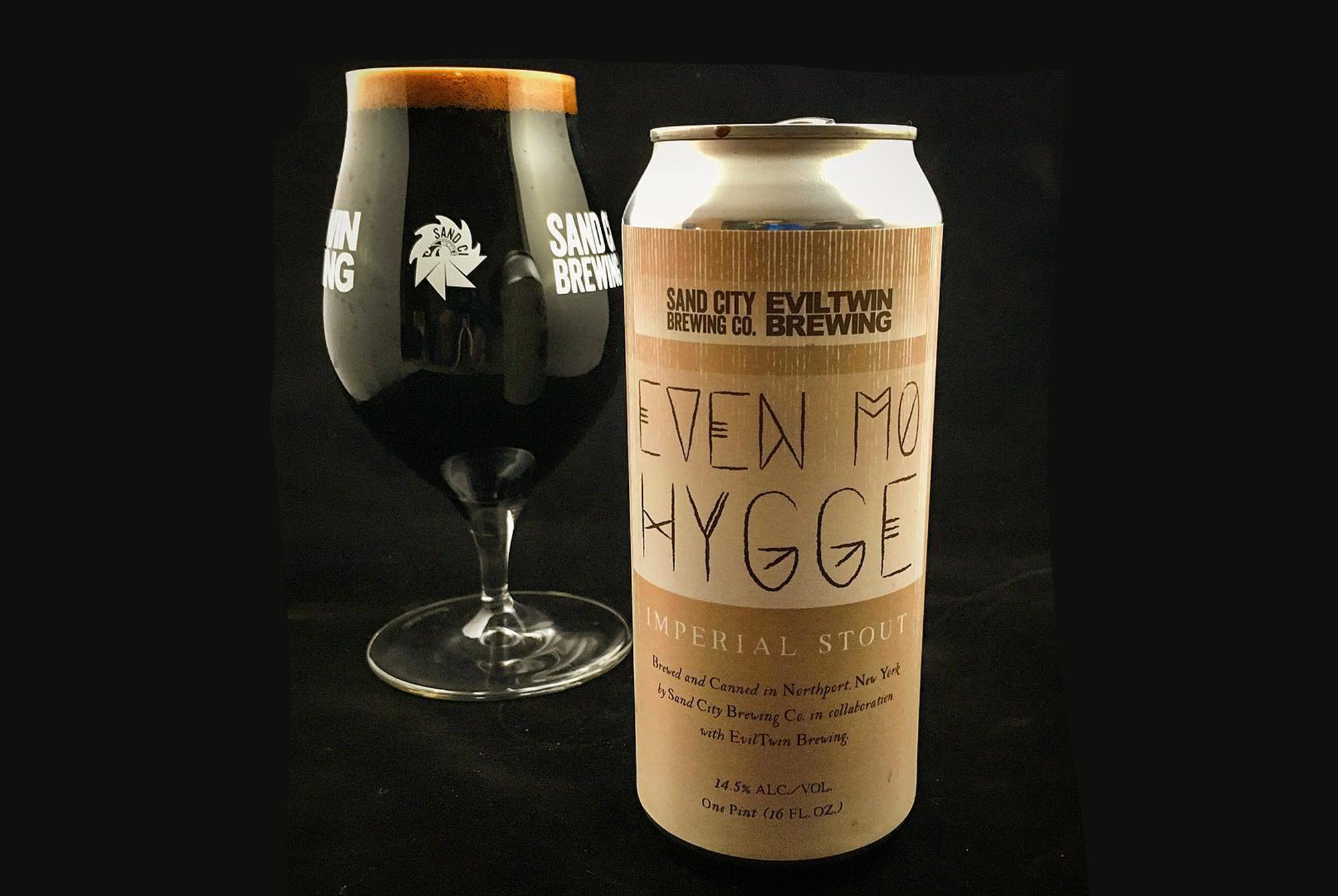
Three of the four cans of the day’s drop contained IPAs, but Sihler opted to taste me on “Even Mo’ Hygge,” an imperial stout brewed in collaboration with Evil Twin Brewing. He cracked it and grabbed two of the specialty Spiegelau glasses also being released that day (the design featured a mashup of both brewers’ logos), and I started my recorder.
Kevin Sihler: “So the day we brewed this Jeppe [Jarnit-Bjergsø, owner of Evil Twin] has a danish in his hand,” he says, eyeballing the viscous liquid laboriously leaving the can. “I’m thinking it’s his breakfast, but apparently he throws a danish into all of his beers for good luck. So he throws a danish into the mash tun. When we were doing the label we were like, ‘Wait, do we have to mention it contains nuts now?’ We started doing all these formulas to figure out if one danish would come through in a big batch.”
Niko Krommydas: What did you find out?
KS: Well, nothing really. Laughs But we put “trace amount of nuts” on the label just to be safe.
NK: So when you and your partners initially conceived of the brewery, how much was own-premise sales a focus?
KS: When we first opened, state legislation was just being passed that allowed breweries to serve beer by the glass if their recipes used a certain percentage of locally grown products. It was new. On-site selling was definitely on our minds, but when we first opened, we honestly weren’t sure if people were going to show up. But our opening weekend was busy, the first week was busy, the first month was busy, and it hasn’t slowed down. Our primary focus in the beginning was making good beer that people would drink and like. But early on, we saw that the taproom was integral to our business. Having one brings people to the brewery who want to experience our brand and what we’re all about. And it’s not only sales; it’s also exposure. A tasting room is like a showroom for your brand.
NK: Selling yourself is obviously better on your margins, but it’s not all about the sales. There’s also the connection: the facetime with fans, the direct feedback from customers.
KS: Exactly. Like I said before, we view the tasting room as our showroom. We’re in the manufacturing business and we make a product, and the tasting room is our direct interface with the consumer to sell them on that product. No one is going to sell a product better than the person that makes it. Right now, the closing hurts our ability to market our product correctly and customers are missing out on the direct experience of Sand City. You know how it is: In 2018, people want to go to the brewery for beer.
NK: What are your thoughts on the line phenomenon in beer?
KS: Some breweries, like Other Half, have made waiting in lines an intrinsic part of their experience, while others, like Sixpoint, have taken steps to try to circumvent it. Right now, lines are a big part of the brewery experience. It’s a culture, a lifestyle. Beer fans enjoy the “line life,” if you want to say it that way. Talking to Sam [Richardson, co-owner of Other Half], they have lines because their customers want that. They’re giving their fans what they want. But from my perspective as a business owner, I like the idea of knocking the lines down. Especially for us being in a village in a suburban area, we don’t want to create any ruckus that would negatively impact our image. That’s why we don’t have regular days when we sell cans. We’ll sell cans on a random weekday. The line is a naturally occurring part of this industry now, and the type of beer we focus on, hazy IPAs, this is how they’re being sold. But creating lines is not our focus. Whether you sell x amount in an hour or a day, you’re still selling the same amount of beer. So we’d rather have it that one day you can grab a case of beer in the tasting room at all times. That’s our goal as we look to expand.
NK: Can you speak about your expansion plans?
KS: Sure. We’re actively looking for a second location. We want to keep this space operating and functioning as it’s been, but we’re looking for a second place to produce and package, probably with another tasting room.
NK: In Northport?
KS: We’re open to all options.
NK: Getting back to your lines, is it strictly a capacity issue? Meaning, do you think people would still queue up if you were able to brew limited-release beers in greater quantities?
KS: A brewery like Trillium produces enough so that most fans can walk in and out within five or ten minutes. However, take a brewery like Tree House; even with expanding into a second facility and dramatically increasing output, there are still lines. Laughs I think both those breweries are anomalies in the industry. I think if we were able to brew more beer it would significantly decrease the line. Again, we’re in a suburban area. If we were in more of a metropolitan area, you can reach more people and then have bigger lines. But as we grow and expand I think we’ll see our lines get smaller and smaller because we’ll have beer readily available. We want to be more Trillium than Tree House meaning that people can walk in and grab cans.
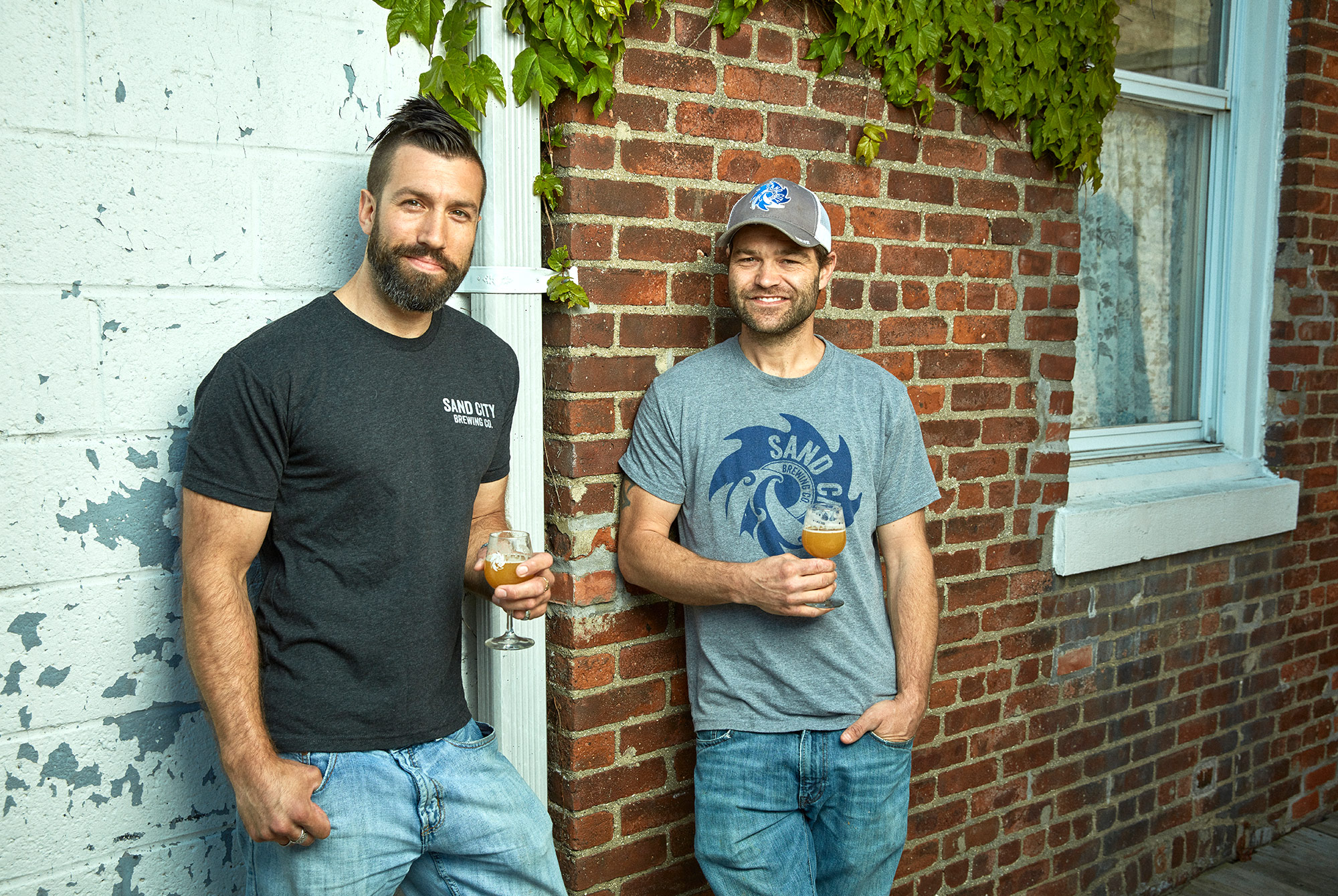
NK: In concert with the above, do you think beer fans become less excited about beers when they are easier to obtain?
KS: It’s funny, because this is the stuff we think about on a daily basis. It’s a supply-and-demand situation. What we’re looking to do is find that equilibrium where we can produce beer and sell out of it quickly while maintaining the reputation and the demand that we’ve built. It’s tough, you have to test the market. But what we know for sure is that our supply is way below our demand. That’s why it’s necessary for us to expand to a bigger location. We can easily sell two or three times more beer if we had the supply.
NK: Do you have a timeline in mind for opening a second location?
KS: Within the year. We’re confident that by the end of 2018 we’ll have a space secured.
NK: With your popularity have come complaints over noise and overcrowding. Last year, the village police issued you several violations, including one for patrons drinking alcohol while waiting in line. Are you taking steps to better manage your lines?
KS: We are. Online sales haven’t been super successful for the breweries that have tried to my knowledge, so that’s not for us. We’ve hired a third-party security company to help with the lines. And we’re always very straightforward on our social media about asking our fans not to drink on lines and to respect all laws. And they do. We just have to be more diligent about it. Not that we haven’t, but just more.
NK: You’re a native of Northport. What has the closing meant to you personally?
KS: Northport is a small place and I live here, so it’s definitely the topic of conversation. It’s a bummer, but we understand it’s temporary and we’re working on building the deck and walkway. The walkway has been the major issue, and it’s been tough to move forward. We started that project in October. But there have been a lot of issues between getting the plans drawn up and then approved, then finding contractors. And the weather, we had a cold spell where we couldn’t pour concrete. So it was a month of waiting for that. But we should be beginning construction this week. The footing is already in. Once we get the walkway done and approved, we’re confident we can get the taproom open. I will say, the closure did allow us to paint the taproom and redo the floors. And we’ve saved a lot of money on glass detergent and pretzels. We’ve probably saved $1,000 on pretzels every month. Laughs
NK: You have another hearing with the village zoning board on March 28. Has the village outlined specific changes that need to be implemented before then?
KS: They haven’t given us any specific changes to implement, but they did bring up a few concerns regarding lines and noise. So in addition to fixing the walkway and adding security, we’re working hard to increase our staff and better educate them to ensure all situations are under control and can be handled by our staff.
NK: Here’s a hypothetical question: If forced to choose, would you abandon can releases in order to reopen the taproom?
KS: Can sales are pretty much our primary focus. It’s a way we can put a large volume of our beer out there, and not only to the local market. We’re sending some of the collaboration stout we just with Evil Twin to Denmark, and that’s awesome. The can is a vehicle that allows us to do that, so we won’t abandon cans.
NK: Do you have a plan if for some reason the situation can’t be remedied?
KS: We’re hopeful that it will be remedied and we’re 100 percent open to work alongside the village. We love Northport. Northport is our home.

